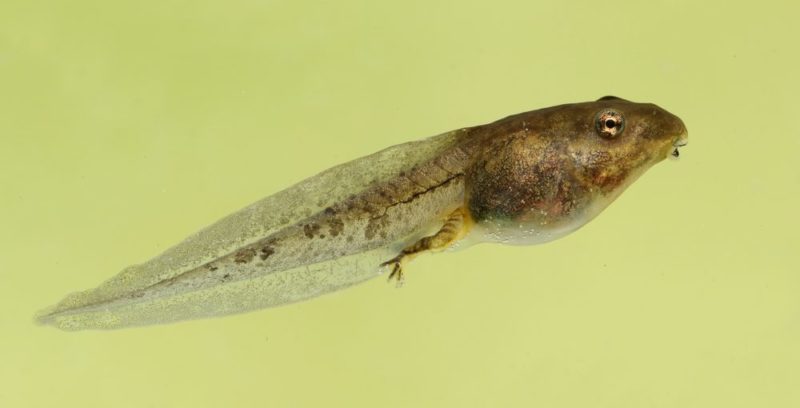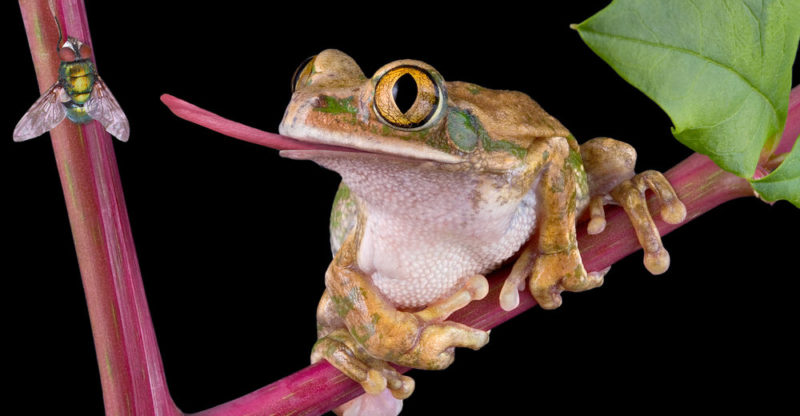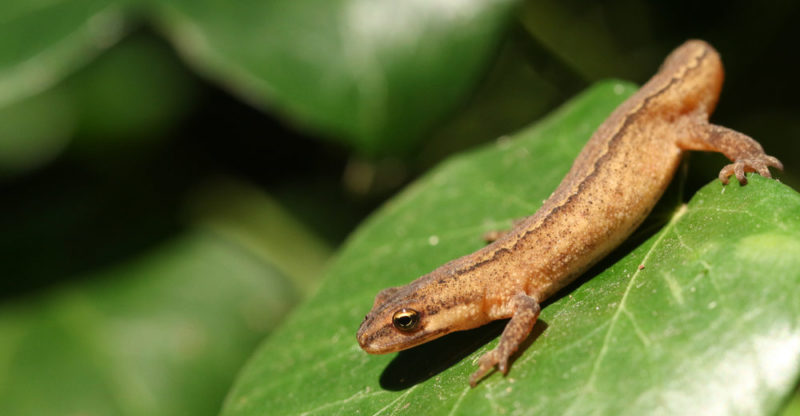We explain what amphibians are, how they are classified, their evolution and metamorphosis. In addition, its characteristics, feeding and more.
What are amphibians?
Amphibians are the oldest land vertebrates . But unlike most of the animals that make up this classification, amphibians go through a metamorphosis during their development, that is, a series of deep morphological changes that distinguish the specific stages of their life cycle.Thus, the first part of the amphibian life cycle takes place in the water , and the second on land . This dual condition is reflected in the etymology of its name: from the Greek amphi (both) and bio (life), that is, it has two different lives.
Amphibians have four mobile limbs , they are ectothermic (they regulate their temperature from the environment ), that is, they are cold-blooded like reptiles and fish .
Zoological classification of amphibians
 Animals of the amphibian class are recognized for being tetrapods (four legs) , anamniotes (their eggs do not have a protective membrane) and go through a metamorphosis in their reproductive cycle. That includes toads, frogs, salamanders, and caecilians.
Animals of the amphibian class are recognized for being tetrapods (four legs) , anamniotes (their eggs do not have a protective membrane) and go through a metamorphosis in their reproductive cycle. That includes toads, frogs, salamanders, and caecilians.The group is further divided into three subcategories or clades : Gymnophiona (vermiform, limbless burrowers, like caecilians), Caudata (have tails and four legs, like salamanders and newts) and Anura (tailless, like salamanders). toads and frogs)
Amphibian evolution
The origin of amphibians is uncertain in phylogenetic terms:
- Some suppose that they derive from the group of temnospondyls, primitive tetrapods of the Carboniferous period , also precursors of many dinosaurs .
- Another assumption would make them descendants of the aquatic tetrapod lepospondyls also from the Carboniferous period, abundant in Europe and North America .
- A third possibility is that both inheritances were true and it was a group with individuals of multiple origin.
Debate would determine whether the category should include all anamniotic tetrapods, or only modern amphibians, known as lissanphibians .
amphibian reproductive cycle

Amphibians are oviparous , that is, they reproduce by laying fertilized eggs during copulation between male and female.
In general, the laying of eggs occurs in aquatic environments and in large quantities , since the tadpole hatches from them, a larva that grows over time and mutates its physical properties to resemble the adult. It then leaves the water and becomes a terrestrial adult capable of continuing the cycle.
amphibian metamorphosis

The embryos formed in amphibian eggs soon give way to larval forms called tadpoles , whose physical characteristics are adapted to the aquatic environment: long tails, absence of legs, round mouth and gills.
Throughout its life, the tadpole feeds more or less omnivorously until its change process begins and its legs form as it loses its tail. In the last stages, not only does the body resemble that of the formed adult, but the gills are lost and pulmonary respiration is activated , a stage prior to the abandonment of aquatic life.
Immediately afterwards, once it has become a young adult, the amphibian leaves the water and lives the rest of its existence as a land animal, with legs and lungs, but generally requiring a very high margin of humidity to survive.
In the case of caudate amphibians or gymnophyans, the metamorphosis is much less radical than in anurans, since the tadpole and the adult are much more similar.
Feeding of amphibians

During their aquatic stage, tadpoles can be herbivorous or basically feed on everything , depending on the species. Some can even tend to cannibalism if conditions are too adverse.
In their adult stages, amphibians are mostly carnivorous , becoming important predators for insects , arthropods , worms, and smaller species of amphibians.
amphibian skin
The skin of amphibians is quite particular. It does not have any type of scales, hair or protective shell , it is permeable to water, it has a very high vascular content and it is made up mostly of glands. Thanks to it, amphibians can stay humid in a terrestrial context, while breathing (skin respiration) and controlling their body temperature .
In many, moreover, the skin of amphibians secretes toxic substances that serve as a defense apparatus , and contain colorful pigments to warn of their poison, or cryptic to camouflage it with the environment.
Amphibian skin typically renews itself through a molting process , during which the animal ingests the outer layers that are about to be shed.
privileged habitat

For the most part, amphibians prefer warm, moist terrestrial environments , such as tropical or subtropical humid areas, as long as the water presence is fresh and not salty. The salt concentration in the oceans is too high for them.
The anurans are the ones with the greatest planetary spread , although their greatest diversity is concentrated in the tropics, while the salamanders prefer the temperate zones of the north.
The caecilians, in turn, prefer tropical heat , although they are really few in number and rare in appearance. The only regions devoid of amphibian life are the driest deserts , oceanic islands, and the Arctic and Antarctic poles .
amphibian biodiversity
There are around 7,000 known species of amphibians, making them among the most numerous animals in the world. Of this number, more than 6,000 are species of toads and frogs , around 650 of salamanders and axolotls, and barely 200 of caecilians.
mythical animals

Amphibians have been intriguing animals for human culture since time immemorial , in which they were linked to abundance and vital proliferation, as well as alchemical nigredo and decomposing elements.
During the Middle Ages they were considered regular ingredients in spells and sorcery , or they were associated with the rains of animals, in which providence punished the behavior of some human group by raining frogs from the sky.
In contemporary children's stories, the toad took center stage as the creature that witches used to turn princes into ; a spell from which only a princess kiss could tear them away. Another common place attributes to touching a frog the transmission of warts.
Salamanders were also considered mythical animals, supposedly born of fire or embers, or even immune to it. Touching a salamander was said to spread fever . As will be seen, contact with amphibians has always been a disturbing fact.
Ecological threats to amphibians
Since 1911 leading ecologists have warned of a radical decline in the number of amphibians populating the world, which could be one of the greatest threats to the planet 's biodiversity .
Climate change, habitat destruction and the introduction of species that violate the food chain are the main factors in the extinction of amphibians at the hands of man.
It is estimated that 85% of threatened mammal species (around 100) today receive little or no ecological protection, despite the fact that 33 amphibians and 3 amphibians are on the list of the hundred most threatened species worldwide. of them in the list of the ten species in current risk of extinction.
The above content published at Collaborative Research Group is for informational and educational purposes only and has been developed by referring reliable sources and recommendations from experts. We do not have any contact with official entities nor do we intend to replace the information that they emit.
Cultural journalist with great interest in education and technological innovation in the classroom. The future passes through technology and it is already here. .
Leave a reply
Your email address will not be published. Required fields are marked *Recent post

Sport: What Is It, Types, Risks, Features, Characteristics and Examples

Dogs: Emergence, Features, Characteristics, Feeding and Breeds

Story: Definition, Elements, Structure, Features and Characteristics

